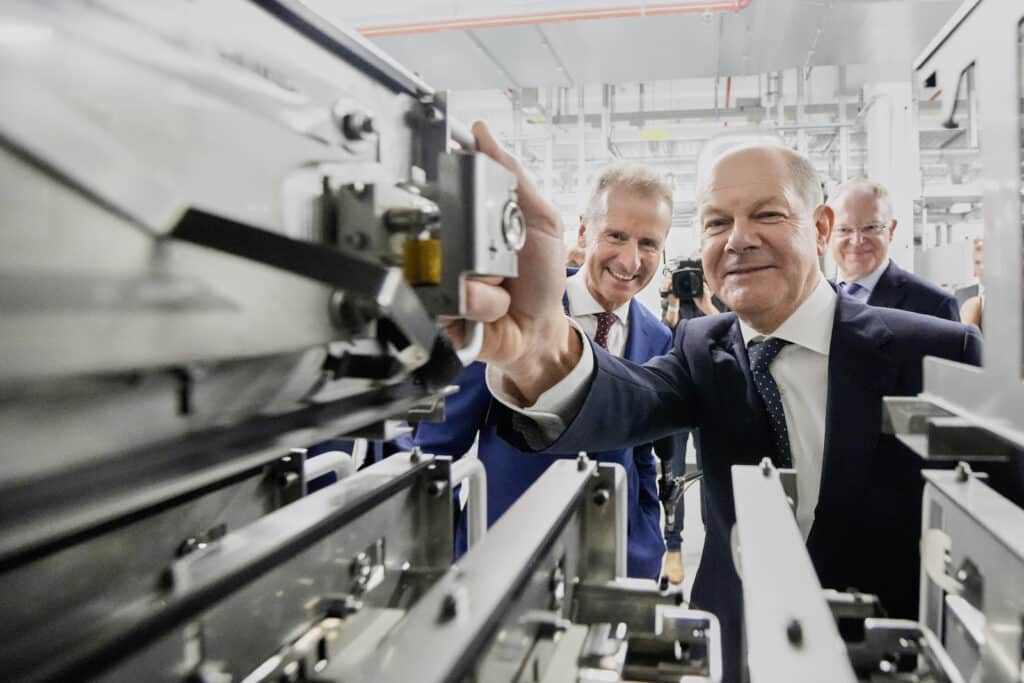The auto industry is in the midst of a technological revolution, one unlike anything manufacturers have experienced since the very earliest days of the horseless carriage. And they’re investing massive sums to develop next-generation battery-electric vehicles, autonomous and connected car systems and other technological breakthroughs.
At the head to the class, at least when it comes to R&D spending as a share of revenues, is General Motors, according to a report by analyst and broadcaster John McElroy. It invested a total of $9.8 billion last year, he noted in a column for WardsAuto. But when it comes to overall spending on research and development Volkswagen has the lead, at a whopping $15.8 billion.
“Automakers are in a mad technological rush, the likes of which we’ve never seen before,” McElroy noted. “While spending more on R&D does not automatically pave a path to victory, the automakers which spend more will likely come out ahead of those who spend less.”
Aiming at EV leadership

In all, GM’s R&D budget was equal to 6.25% of its total sales last year. VW may have spent more but it was equivalent to just 5.13% of its revenues.
Those big budgets should come as no surprise. Both GM and VW have made major commitments to electrify their line-ups, the Detroit automaker’s promising to go 100% EV by 2035. VW has more mouths to feed, with more than a dozen different brands. While some of those — including high-line Bentley — will go 100% electric before the end of this decade, the Germany auto company has been reluctant to set a target changeover date for other marques, including the namesake VW brand.
Add in the R&D that GM has committed to for its autonomous driving technology. It plans to bring out a major update of its hands-free Super Cruise system late this year. And it has promised that the new Ultra Cruise technology eventually will be able to operate hands-free on virtually all U.S. and Canadian roadways.
Leaders and laggards
The R&D spending numbers provide intriguing insights into what individual manufacturers are working on and how committed they are to get there.
In terms of raw R&D spending, Mercedes-Benz is third, after VW and GM, the German luxury marque writing checks totaling nearly $9.4 billion in 2022.
Next in line was Toyota — which has been in a long-running battle with Volkswagen for global automotive sales leadership. The Japanese giant spent $8.96 billion on research and development last year. But the number was less impressive when measured as a percentage of its total sales. At just 3.2%, that was a fraction of the industry leaders, and just slightly more than Stellantis. The Euro-American automaker budgeted $5.7 billion for R&D last year, or 2.9% of sales.
Tight-fisted Tesla and Hyundai
Tesla outspent Toyota, at least on a percentage basis, at 3.77%. Not surprisingly, considering its far smaller volume, the American upstart’s total R&D budget was a relatively modest $3.1 billion. According to McElroy, Tesla’s low investment may reflect its slow cadence when it comes to bringing out new models. It hasn’t launched anything new — other than its low-volume Semi truck — since March 2020.
Another surprise: the low investment by the Hyundai Motor Group which last year became the world’s third-largest automaker based on total vehicle sales. It spent barely $2.5 billion on R&D for its three brands: Hyundai, Genesis and Kia. As a percentage of revenues that was a mere 1.75%. Considering the commitment the South Korean car group is making to go electric and add connected and autonomous technologies, one has to wonder if its R&D budget will start to grow going forward.
Nissan was another laggard, investing just $2.3 billion in R&D for 2022, about 2.9% of sales. But the figure is a bit misleading. One has to factor in the equal amount spend by Renault, its French alliance partner dedicating a more impressive 4.6% of its sales revenues.
Will big R&D budgets pay off?
Concludes McElroy, “the companies that are investing more heavily in EVs right now, like GM, Mercedes, VW, Ford, BMW and Renault, are probably going to get over the hump before the others. That means that in another two to three years or so their R&D spend could level off, letting them drop more money to the bottom line.”

